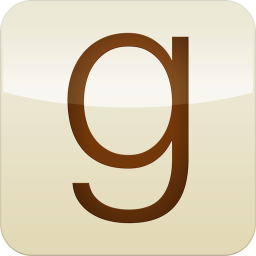 Self-publishing success E.L. James' Fifty Shades of Grey trilogy. Self-publishing success E.L. James' Fifty Shades of Grey trilogy. By C.R. Bruce @crbrucewrites Less than a year ago, I thought (well, I'd always thought) that self-publishing was a cop-out, an admission that your book wasn't good enough for a traditional publisher. Guy Kawasaki's book opened my eyes to the new reality: the self-publishing successes, the problems with traditional publishers, traditional publishers signing self-published authors, and shockingly, the successful authors moving to self-publishing. There are incredible new options, tools, resources, and distribution platforms available to the savvy self-publisher: CreateSpace, Kindle Direct Publishing, BookBaby, Lulu, Lightning Source, Blurb, Smashwords ... I could go on. The power to 'do it right' is now in the author's hands, but you have to be, as Guy Kawasaki said, Author, Publisher, and Entrepreneur! Writing the book? That was step 1. Self-publishing a book that's equal to its traditionally published cousins is a long, intense, collaborative process, and really, more like ... waaaiiittt a minute. [Epiphany.] I'd been doing it for years! Self-publishing (the right way) is exactly the same as making an independent film (the right way)! Well, whad'aya know. Looking at it like this, I don’t know why there’d be any stigma at all. Let’s make some historical comparisons. For years Hollywood was king, the gate keeper of the movie industry. Let’s call them the “traditional publishers.” But who remembers the digital video revolution? When high-quality video cameras and top-of-the-line video editing software became readily available? Anyone who wanted to make movies now possessed the technology to do it. And make them they did, lots of them. Let’s call them the “self-publishers.” Digital video democratized filmmaking. Along with the rise in the number of films being made, more distribution channels emerged. The film festival circuit expanded exponentially, indie cable channels, the internet, YouTube! These were all avenues the self-publishing filmmakers could use to get their movie seen. Sometimes Hollywood stepped in and bought rights to a great “self-published” film. Sometimes the “self-published” film garnered critical acclaim and launched the filmmakers’ careers. And, yes, sometimes the self-published film was lackluster and faded into obscurity. But so what? Isn’t that the way with all entrepreneurial endeavors? Sometimes you win; sometimes you lose? Here’s the point. Amazon and companies like it have democratized self-publishing. Self-publishing a book today is no different than self-publishing an independent film during the last decade or two. Look at the bare bones of the indie movie-making process. First, you write the script. Second, you gather a team of professionals, cast and crew, to help you. Third, you shoot the movie. Fourth, you edit the movie. Fifth, you use every means at your disposal to market yourself and your movie so it’s purchased by a major broadcaster or distributor. And you do all of this on your own dime (if you live in Canada you might get lucky with government grants). Now look at self-publishing books. First, you write the book. Second, you gather a team of professionals, copyeditor, editor, and designers, to help you. Third, you use every means at your disposal to market your book so that it sells, gets picked up by a traditional publisher, or launches your author career. Lots of similarities, am I right? Whether you’re self-publishing a book or a movie, you’re betting on yourself. Yes, there are lots of sub-par movies and books out there as a result of the democratization of filmmaking and publishing (this is where most of the criticism comes from). This isn’t news in the entrepreneurial world; lots of products don’t make the grade. But this reality is accepted in the filmmaking world, so why not the writing world? And even if you do everything right is it a long shot? Kinda (marketing is tough) but that’s why success feels good! We’re all entrepreneurs, filmmakers and bookmakers alike, be it a good investment or a bad one. - C.R. Bruce C.R. Bruce’s first novel, “Stalled,” is slated for release in January, 2015. You can follow his progress to publication at http://www.crbrucewrites.com By C.R. Bruce @crbrucewrites  An author photo is as much a part of our books as the dedication, acknowledgements, half-title, copyright, etc. Without that photo we’re just faceless word spammer bots. So of course my plan was to either a) Pay a professional photographer to dress me up and pose me by a lake or amongst the falling leaves of Autumn, or b) Repurpose my best selfie from the dregs of my Pictures folder. I confess, option ‘b’ had won. But that changed when I saw this post from Simone Collins (@SimoneHCollins) on Jane Friedman’s site. My first thought was is this allowed? Aren’t author photos sacred ground must-haves in the category of ‘we accept no substitutes?’ It would appear, no; it’s author’s choice (unless a reader out there can offer an authoritative rebuttal?). Full disclosure, I personally don't know any authors or soon-to-be authors currently using portrait art for their author photos. I’m assuming they’re out there, but if not, I’m fine being one of the first soldiers of the revolution. So why choose portrait art over a photo? Simone offers many good reasons in her linked post, but I’ll let you read them for yourself. Here’s my take on it. Writing a book, or APEing a book as Guy Kawasaki and Shawn Welch would say (see their book here), is a monumental achievement. The day you finish your book you'll feel like a king or a queen! Sadly, that feeling won't last long as self-doubt and insecurity creep in, but it will return in spurts. That's what being a writer is, alternating between feeling like the king of the world and a talentless hack, depending on the day. But what if you could capture that kingly or queenly feeling? Back in the days of Marie Antoinette and Napoleon they didn’t have Digital SLR cameras, iPhones, or state-of-the-art photo studios, but even if they did their castle PR people would have told them to go with the portrait. Why? Because a portrait captures your best self, your writing alter ego, a reminder of that confident, kingly person that started writing in the first place. Think of the effect a photo achieves when it’s changed from color to black and white. You can feel that, right? It produces a different emotional reaction. Now take that same visceral response and multiply it 10x for portrait art. Now you’re that super-somebody, a writer worthy of more than a two-second click and a flash of light. And why shouldn’t you be? You wrote a book! That’s an accomplishment worth trumpeting! You might not be Napoleon or Marie Antoinette, but you wouldn’t know it because you have a portrait. That’s the way I feel about my portrait anyway, and I feel that way as a reader too, as a fan. When I see a portrait it carries more weight with me than a photo. A portrait is rarer nowadays, unique. What do you think? I haven’t yet decided where I’ll place my author portrait in my book. It’ll either be on the back cover, on the inside flap of the back cover, or inside the book in the front or back matter. Thoughts? Either way, I’ll have beaten the author photo blahs and the epic selfie fails. And you should too! The artist, TheMeeDes, drew my portrait and I would highly recommend her as she is both efficient (quick!) and talented. Her portrait style was my favorite, but there are many different artists and styles to choose from on Simone’s websites: Art for Authors and ArtCorgi. Check it out for yourself. - C.R. Bruce C.R. Bruce’s first novel, “Stalled,” is slated for release in January, 2015. You can follow his progress to publication at http://www.crbrucewrites.com |
Comments?
If you don't see the comments, or the comment form, click the "# Comments" link under the Blog title. Author's Message
I'll be blogging about "Stalled," writing & publishing, musings, the lessons that led me here, adventures beyond, and special promotions and giveaways! Subscribe using the simple form above! - C.R. Bruce Archives
July 2016
Categories
All
See what I'm reading on Goodreads!
|

